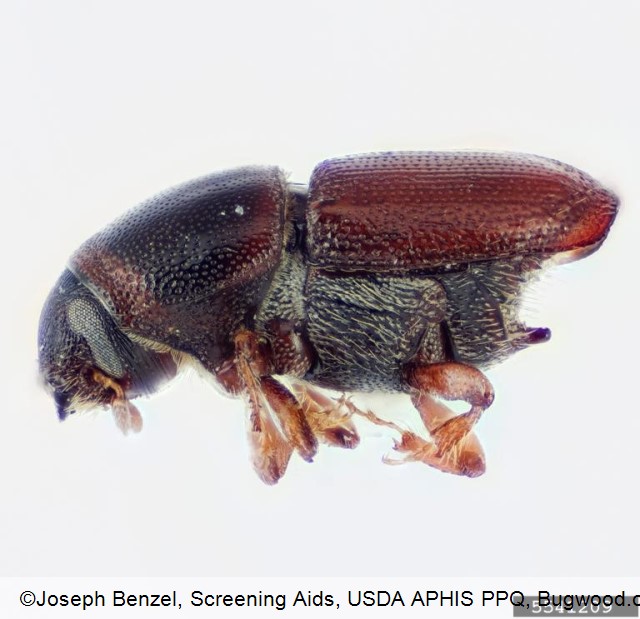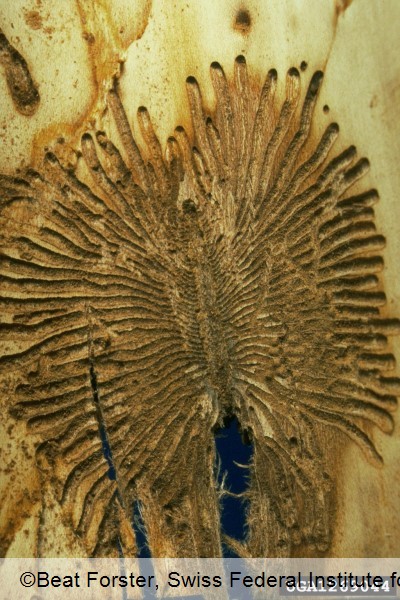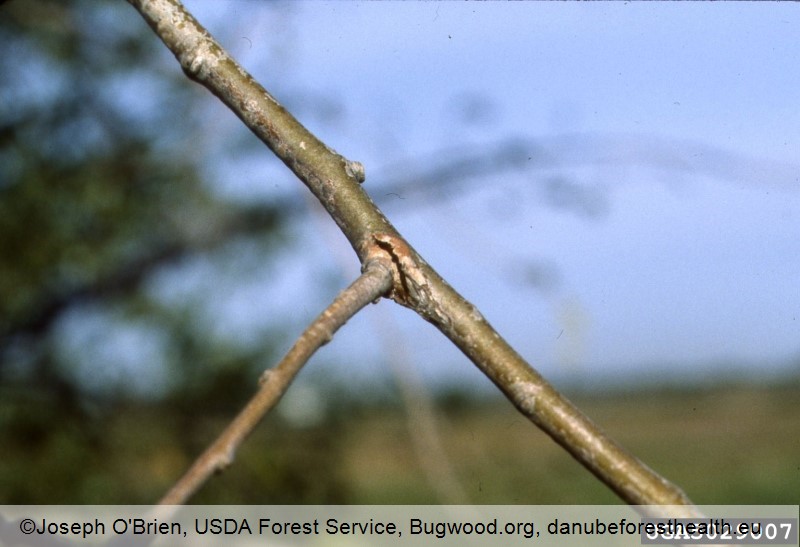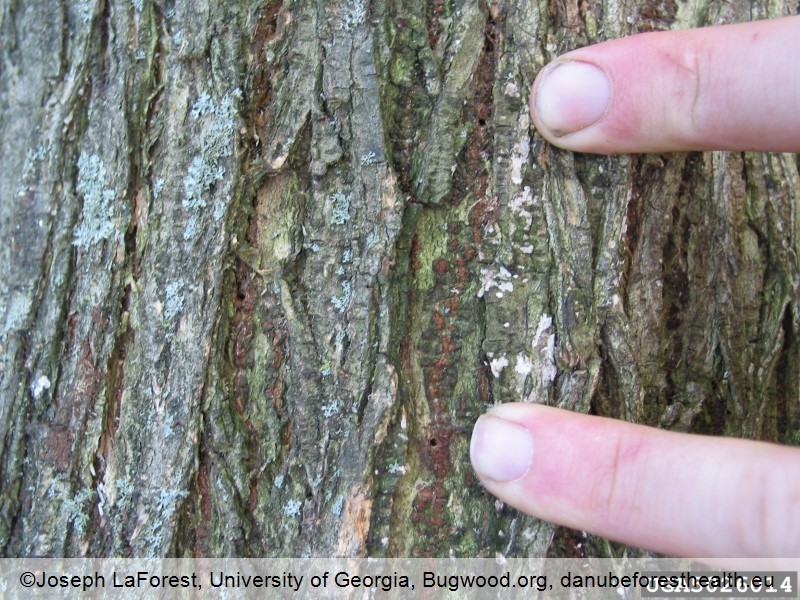Animalia
The smaller European elm bark beetle
Scolytus multistriatus
Andreja Kavčič
|
|

Fig. 1. A smaller European elm bark beetle, S. multistriatus, adult

Fig. 2. A S. multistriatus gallery

Fig. 3. A sign of the smaller European elm bark beetle maturation feeding on an elm twig

Fig. 4. The smaller European elm bark beetle emergence holes
DETECTION PERIOD:
Adults can be seen in May – June and in August – September. Sub-adults can be found in the bark all year round.
DESCRIPTION:
Adults are shiny, dark reddish brown to black beetles. The body is compact, oval, 2–3 mm long. After mating (monogamy) in spring (May – June), females bore a mating chamber in the bark (phloem), where mating occurs. Each mated female excavates a maternal gallery, which is uniramous and straight, running vertically. It is approximately 5–8 cm long and 2 mm wide. The female lays about 150 eggs, one by one on the side walls of the gallery. Larvae feed on the phloem, by which they create dense, long galleries that start perpendicular to the maternal gallery and end widening and turning slightly upwards or downwards. Larvae are white, C-shaped, with a brown head. S. scolytus overwinters in the larval stage. The pupa is white and about the size of the adult. After emerging through a round exit hole in the bark, young beetles find another host to feed on young twigs (typically in twig forks) to sexually mature (maturation feeding). S. multistriatus generally develops two generations per season. Beetles of the first generation swarm in August – September. The second generation starts developing in autumn. Larvae of the second generation overwinter.
HABITAT:
Natural habitats, nurseries, plantations and urban areas. Beetles develop in the bark of elm trees (Ulmus spp.). They attack trees that are weakened by various stress factors, such as drought, pruning, diseases, defoliators, … Brood development takes place in hosts of a smaller diameter (5–20 cm). Young beetles choose healthy and vigorous trees for maturation feeding.
STATUS:
The smaller European elm bark beetle, S. multistriatus, is native to Europe. It can be found throughout the ReFOCUS area.
IMPACT:
The smaller elm bark beetle is a serious pest of elms (Ulmus spp.) throughout Europe. It causes tree death and wood loss. Damage is caused by larvae, which feed on phloem and create extensive galleries in the bark. The beetle is also a vector of phytopathogenic fungi that cause Dutch elm disease (Ophiostoma ulmi, O. novo-ulmi). Minor damage is caused by maturation feeding on twigs. Damage is caused throughout the season.
SIMILAR SPECIES:
Scolytus species are morphologically very similar and they have similar life histories. The differences between species are in small morphological characteristics that are difficult to see to an untrained eye. Nevertheless, different Scolytus species can generally be distinguished by the shape and size of their galleries.
|